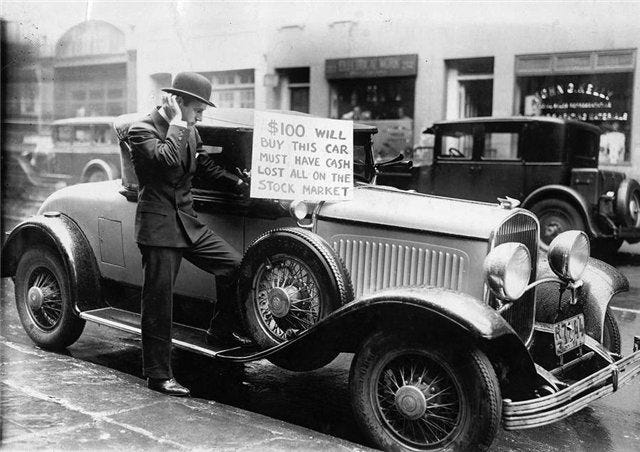Devils Take the Hindmost
John Kenneth Gailbraith, Edward Chancellor, Jim Grant and Josh Wolfe on the “vortex of hopes and hazards, of blinding passions and blind practices.”
What happens at the bottom? After the speculative mania has been identified, after orderly de-risking has given way to panicked selling, after the seductive illusion of a new paradigm is shattered, what are the hallmarks of The End of The End of the bubble? Josh Wolfe, co-founder of Lux Capital, wrote in his Quarter 3 letter:
An entire generation has not seen a downtown, has not experience widespread loss from widespread leverage across sprawling interconnected systems, has not run back to safe haven occupations or embraced the tomes of value investing or timeless classics warnings of rampant speculation, of devils taking the hindmost or of the madness and delusions of crowds. Jonathan Swift said reason is a very light rider and easily shook off.
Writers have defined bubbles and the nature of speculation for time immemorial, Samuel Taylor Coleridge said in his 1817 Lay Sermon:
…there have occurred at intervals of about 12 or 13 years each, certain periodical Revolutions of Credit…for a short time this Icarian Credit, or rather illegitimate offspring of CONFIDENCE…seems to lie stunned by the fall…Alarm and suspicion gradually diminish into a judicious circumspectness; but little by little, circumspection gives way to the desire and emulous ambition of doing business; till Impatience and Incaution on the one side, tempting and encouraging headlong Adventure, Want of principle, and Confederacies of false credit on the other, the movements of Trade become yearly gayer and giddier, and end at length in a vortex of hopes and hazards, of blinding passions and blind practices
Tops, viewed in hindsight, sit on the chart like the frozen graves of failed Everest climbers but bottoms fade into the noise of the past. Looking back on the writings about market bubbles and their eventual pop can help identify the way-posts that signal the end of mania, the return of reason and the possibility for opportunity. Just as an entire generation has not seen a severe downturn, so too has an entire generation of investors not lived through a bottom. Below are what you might call the “Stages of Grief” for the bottom of cycles.
Frauds are Identified
Blame is Assigned
Innovation Investment Returns
Keep reading with a 7-day free trial
Subscribe to Lewis Enterprises to keep reading this post and get 7 days of free access to the full post archives.



